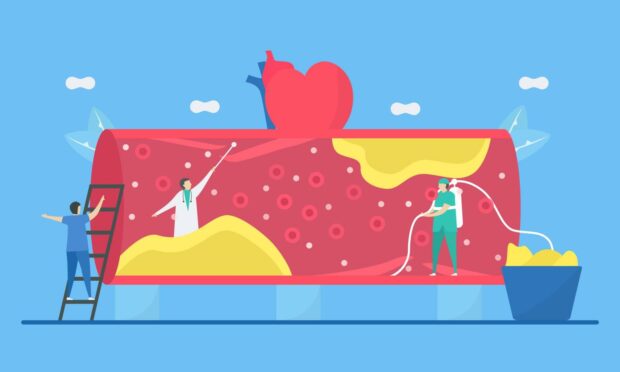Heart disease is one of the leading causes of death in Scotland – but a few simple changes can drastically reduce your risk of developing it.
Cutting out junk food, ditching saturated fats from your diet and eating more fibre can all have long-lasting benefits.
High cholesterol – a type of fat in the blood – is of the biggest risk factors. Cholesterol itself is not unhealthy, as every cell in the body needs it to make cell membranes, hormones, and vitamin D.
However, too much of it can block and damage your blood vessels making you more likely to have cardiovascular problems or a stroke.
We’ve looked at some of the easiest ways to lower your cholesterol.
Young men and older women are at most risk
Dr Rhianna McClymont, lead GP at digital healthcare provider Livi, says you can get tested for high cholesterol by your local doctor.
“Young men are statistically more likely to have problems with high cholesterol than young women, although this trend generally reverses after women reach menopausal age when their risk of high cholesterol increases,” she said.
“There are generally no outward signs of a problem – that’s why it’s often best to get tested.
“Your GP can measure cholesterol using a blood test and will consider your age, sex, weight, blood pressure, personal and family medical history before deciding on an action.”
Thankfully there are several ways people can change their lifestyle and Dr McClymont has offered five changes you can make.
Cutting saturated fat
Eating a diet high in saturated fats increases the risk of high cholesterol.
These fats are found in meat, cheese and other animal-based foods, as well as some vegetable oils, including palm and coconut.
Cutting your saturated fat intake could reduce the risk of heart disease by 17%. Switching to unsaturated oils such as sunflower and olive, and generally reducing the amount of fats you use, could lower it by as much as 30%.
Fibre helps lower cholesterol
Research shows that eating three grams of soluble fibre a day – the amount you get from three apples – can help lower cholesterol.
You can increase your fibre intake by eating wholegrain versions of cereals, pasta and bread, and incorporating the likes of more beans, fruit and vegetables into your diet.
Oats are also great as these contain both fibre and beta-glucans, a natural sugar that is also proven to lower cholesterol.
Exercising regularly reduces your risk of heart disease
Two hours of aerobic exercise – movement that gets your heart pumping and makes you out of breath – a week can reduce the risk of heart disease by 7.6% in women and 5.1% in men.
It also helps to increase your levels of HDL cholesterol, which is the form that protects your heart.
Quit smoking
Smokers have lower levels of healthy HDL cholesterol than non-smokers.
But those who quit smoking typically show rising levels of it within three weeks.
A GP can talk you through the support available to help you stop smoking for good.
Swap junk food for home cooking
Processed foods are often high in saturated fats, refined grains, added sugars and salt. These increase the risk of high cholesterol and other heart disease risk factors, including weight gain.
Cooking from scratch where possible and using fresh ingredients is healthier.
It’s also worth considering a more plant-based, Mediterranean-style diet as research shows it can help reduce blood cholesterol by up to 15%.
This includes brightly coloured fruits, vegetables and wholegrains, as well as servings of fish and healthy fats, like olive oil.
